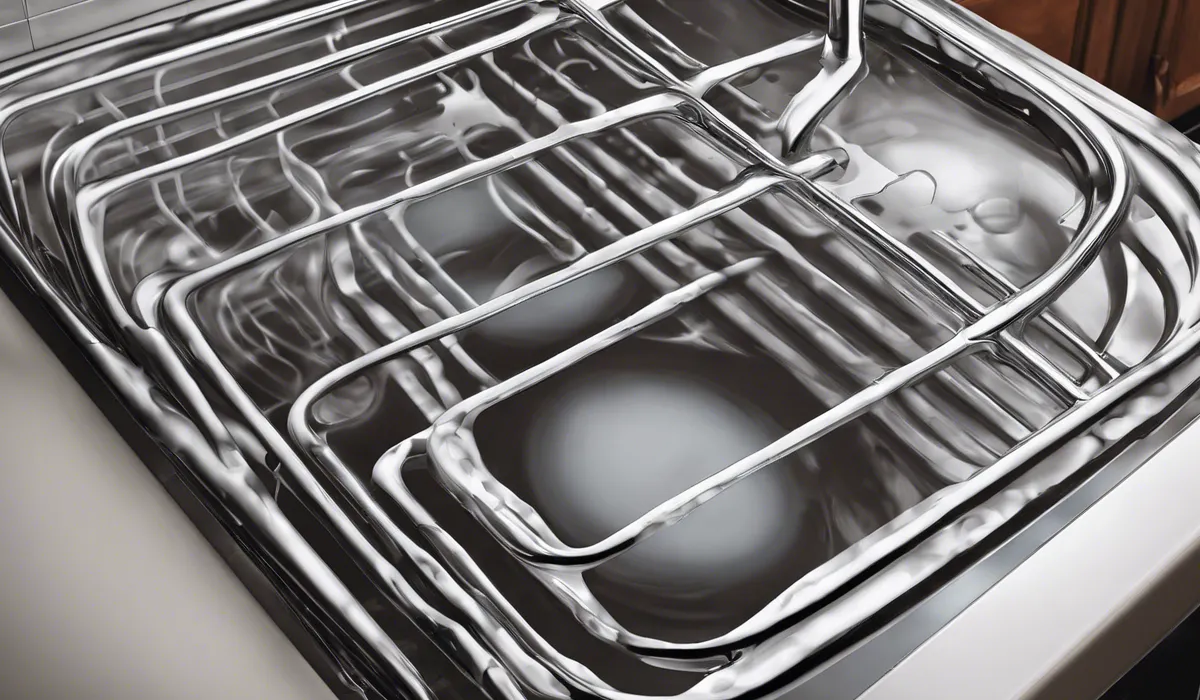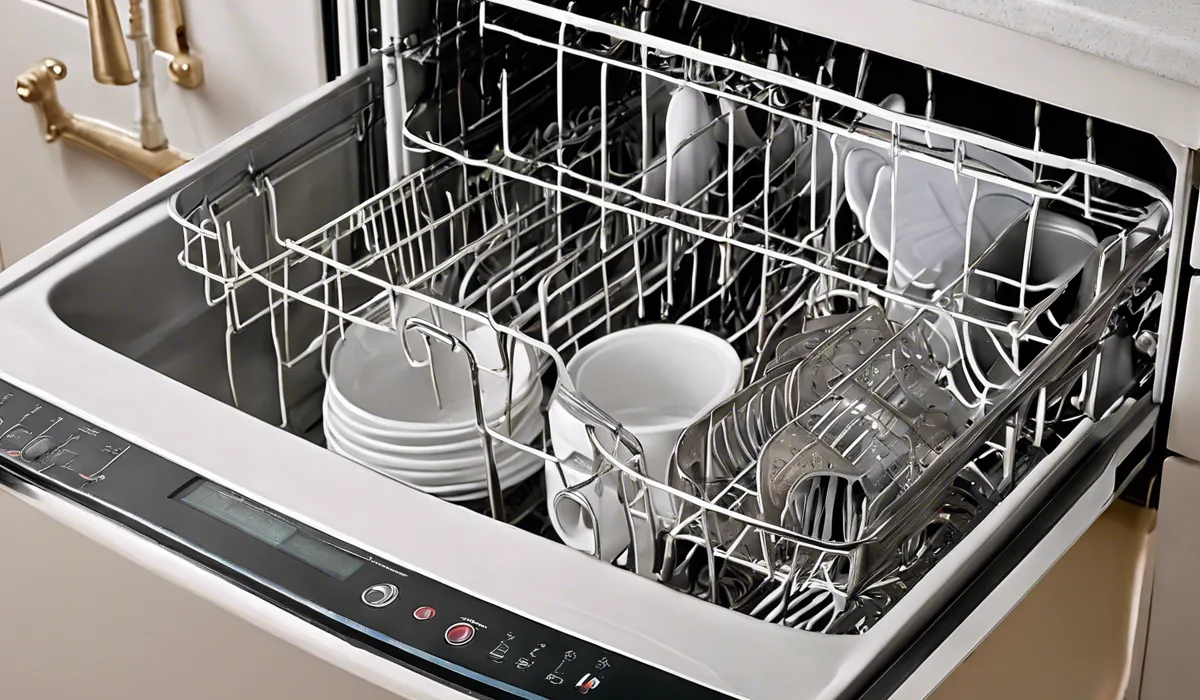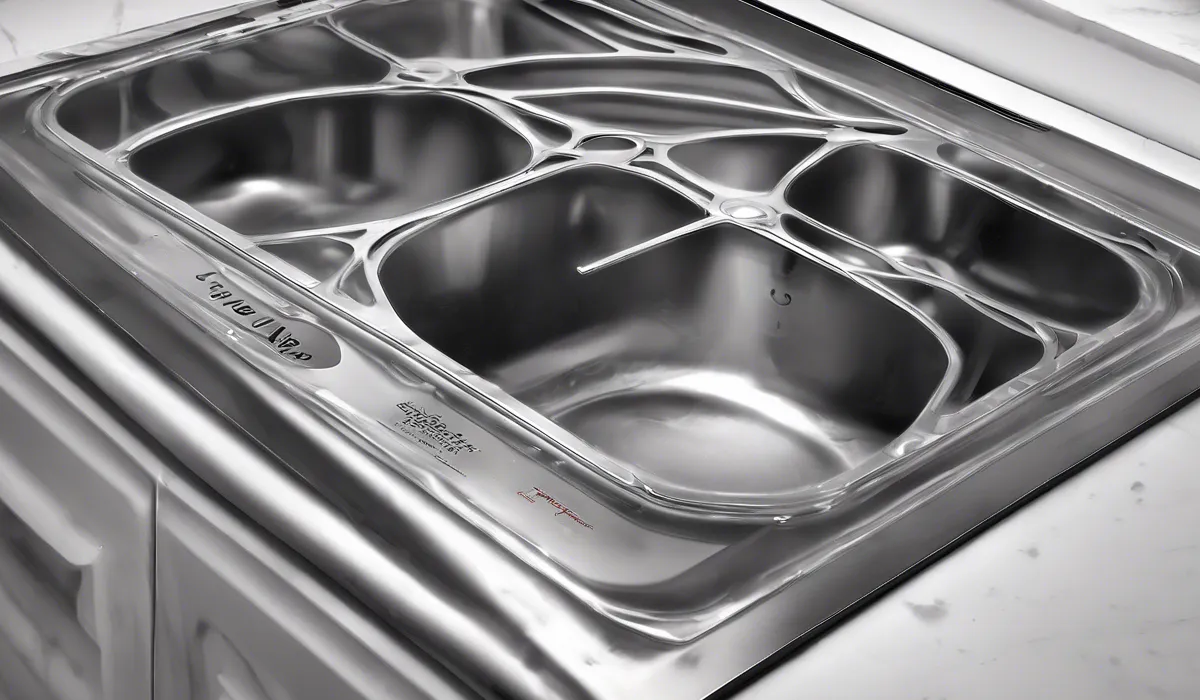What is a Dishwasher Gasket? Essential Seal Explained
A dishwasher gasket is a flexible seal typically made of rubber or soft plastic, positioned around the dishwasher door to prevent water leaks during operation. It creates an airtight seal between the door and the appliance body, ensuring no water escapes while the dishwasher runs.
Understanding Dishwasher Gaskets

Definition of a Dishwasher Gasket
A dishwasher gasket is a crucial component of your dishwasher. It is a flexible seal, usually crafted from rubber or soft plastic.
This seal is snugly positioned around the dishwasher door, playing a vital role in the appliance’s functionality by preventing water from leaking out during the wash cycle.Its presence ensures that the kitchen remains dry, and the dishwasher operates efficiently.
Role of the Gasket in Dishwasher Functionality
The gasket’s primary role is to create an airtight seal between the dishwasher door and the body of the appliance.
When the door shuts, the gasket compresses, forming a barrier that stops water from escaping. This seal is essential because it allows the dishwasher to maintain the proper pressure and temperature needed to clean dishes effectively.
Materials Typically Used for Dishwasher Gaskets
Dishwasher gaskets are commonly made from durable materials capable of withstanding high temperatures and exposure to water and detergents.
Rubber, especially ethylene propylene diene monomer (EPDM), is frequently used because of its resilience and long lifespan. Some gaskets may also be made from soft plastics or silicone, which offers similar benefits.
Common Shapes and Designs
Gaskets come in various shapes and designs to fit the multitude of dishwasher models on the market.
Some are simple strips that run the perimeter of the door, while others may have complex profiles with grooves and ridges that enhance the seal.
Regardless of the design, all gaskets serve the same fundamental purpose—to keep the water inside the dishwasher where it belongs.
Maintaining and Troubleshooting Dishwasher Gaskets

Signs of Wear and Tear
Over time, a dishwasher gasket can show signs of wear and tear. Cracks, splits, or a gasket that has become hard and lost its flexibility are clear indicators that it may not be functioning correctly.
If you notice any leaks or dampness around your dishwasher after a cycle, it’s time to inspect the gasket closely.
Routine Cleaning and Maintenance Tips
To extend the life of your dishwasher gasket, regular cleaning and maintenance are essential.
Wipe down the gasket with a soft cloth and a mild soap or dishwasher cleaner to remove any food particles or residue. This should be part of your routine kitchen cleaning tasks to ensure that the gasket remains in good condition.
Step-by-Step Guide for Inspecting Gasket Condition
To inspect your dishwasher gasket, start by opening the dishwasher door and examining the entire length of the seal.
Look for any visible signs of damage, such as tears or areas where the gasket may have become compressed and no longer bounces back to its original shape. Feel along the gasket’s surface for any inconsistencies or debris that could interrupt the seal.
When to Consider Replacing Your Dishwasher Gasket
If your gasket shows significant wear or damage, or if you’re experiencing persistent leaks even after cleaning, it’s likely time to replace the gasket.
Continuing to operate your dishwasher with a faulty gasket can lead to water damage in your home and less effective dishwashing cycles.
Replacing a Dishwasher Gasket

Selecting the Right Gasket for Your Dishwasher Model
When it’s time to replace your dishwasher gasket, the first step is to find the right one for your specific model.
Check the manufacturer’s manual or look up the model number online to ensure you purchase the correct gasket. This information is vital to ensure compatibility and a proper seal.
Tools and Materials Needed for Gasket Replacement
Replacing a dishwasher gasket typically requires minimal tools. You’ll need a new gasket, a pair of gloves to protect your hands, and potentially a soft-headed tool or a screwdriver to help remove the old gasket without damaging the dishwasher.
Some gaskets may also come with adhesive, which you’ll need to secure the new seal in place.
Step-by-Step Instructions on Replacing the Gasket
Begin by removing the old gasket. Carefully pull it away from the door, taking care not to damage the surrounding area. Clean the gasket groove thoroughly to remove any residue or buildup.
Then, align the new gasket with the groove and press it firmly into place, starting from the top center and working your way down to the sides. If your gasket requires adhesive, apply it according to the manufacturer’s instructions.
Tips for Ensuring a Proper Seal and Fit
After installing the new gasket, check for any gaps or areas where the seal isn’t flush with the door.
You may need to adjust the gasket slightly to ensure a perfect fit. Close the door to help mold the gasket into the correct position and leave it shut for a few hours if possible, to help the gasket settle.
Safety Precautions to Take During Replacement
Safety is paramount when replacing a dishwasher gasket. Ensure the dishwasher is turned off and disconnected from the power supply to prevent any electrical hazards.
Wear protective gloves when handling the gasket and cleaning solutions, and follow all instructions carefully to avoid injury and ensure a safe and successful replacement.
FAQs About Dishwasher Gaskets
What is the function of a dishwasher gasket?
The function of a dishwasher gasket is to provide a flexible, watertight seal between the dishwasher door and the appliance body to prevent water from leaking out during operation.
What materials are dishwasher gaskets typically made from?
Dishwasher gaskets are typically made from rubber or soft plastic, which allows them to be flexible and create an effective seal.
How do I know if my dishwasher gasket needs replacing?
You may need to replace your dishwasher gasket if you notice water leaks around the door or if the gasket is visibly damaged, cracked, or has lost its flexibility.
Can I replace a dishwasher gasket by myself?
Yes, many dishwasher gaskets can be replaced by the user by carefully removing the old gasket and pressing the new one into the designated groove around the door.
How often should I inspect my dishwasher gasket for wear and tear?
It’s a good practice to inspect your dishwasher gasket periodically, such as every few months, to ensure it remains in good condition and functions properly.
Final Thoughts
The dishwasher gasket is a crucial component that ensures the appliance operates effectively without water leaks.
Made of rubber or soft plastic, this flexible seal surrounds the dishwasher door, providing an airtight barrier between the door and the machine’s body, maintaining the integrity of the washing environment and protecting the surrounding area from water damage.





